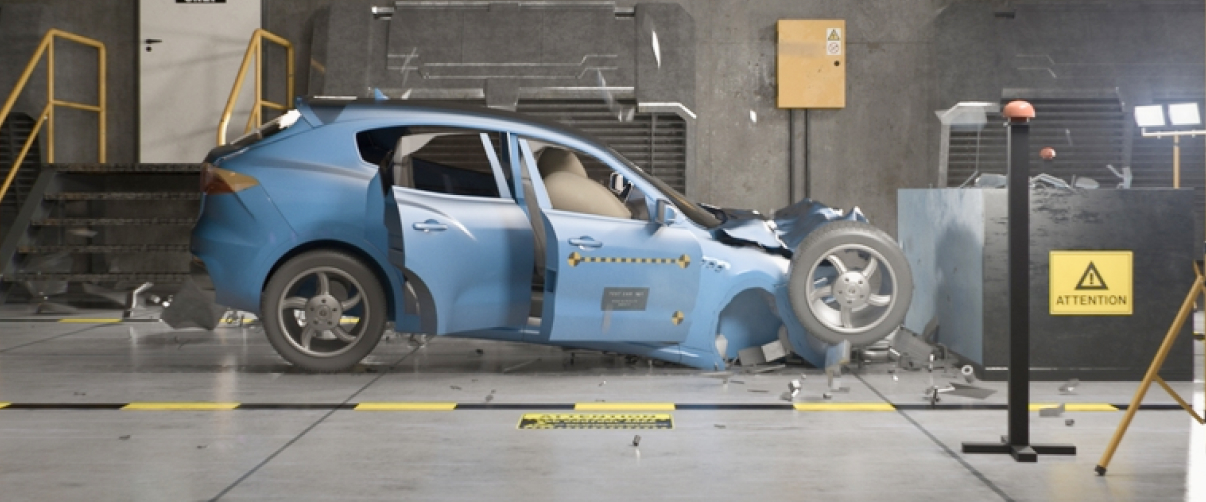In today’s automotive landscape, compact cars have captured the attention of many drivers seeking affordability, fuel efficiency, and ease of maneuverability. Models like the Honda Civic, Toyota Corolla, Toyota Prius, and Hyundai Elantra have become household names, offering modern features once exclusive to pricier vehicles. However, with the roads increasingly dominated by larger vehicles such as SUVs and trucks, a pressing question arises: Are compact cars really safe?
Are Compact Cars Really Safe? Crash Test Ratings & Safety Features Compared

The Popularity of Compact Cars
Compact cars strike a balance between size and functionality. They are designed to comfortably seat up to four passengers while offering a nimble driving experience ideal for urban settings. The appeal lies in their:
- Affordability: Lower purchase prices make them accessible to a broader range of consumers.
- Fuel Efficiency: Smaller engines and lighter weights contribute to impressive gas mileage.
- Modern Features: Advanced technology and safety features are increasingly standard.
- Ease of Parking: Their smaller size makes navigating tight city streets and parking spaces simpler.
Safety Features in Compact Cars
Modern compact cars are equipped with a host of safety features aimed at protecting occupants:
- Airbags: Front, side, and curtain airbags to cushion impacts.
- Antilock Brakes: Prevent wheels from locking during sudden braking.
- Traction Control: Helps maintain grip on slippery surfaces.
- Advanced Driver-Assistance Systems (ADAS): Including lane departure warnings, automatic emergency braking, and blind-spot monitoring.
These features have significantly improved the safety profiles of compact cars over the years.
Crash Test Ratings and Statistics
Despite advancements, data suggests that compact cars may be at a disadvantage in severe collisions, especially with larger vehicles. According to the Insurance Institute for Highway Safety (IIHS), small cars and minicars have higher fatality rates compared to larger vehicles. In the 2017 model year, 15 out of the 20 models with the highest death rates were small cars.
Physics plays a crucial role here—the smaller mass of compact cars means they bear the brunt of force in collisions with heavier vehicles. However, not all compact cars perform poorly. Models like the Volkswagen Golf and Nissan Leaf have shown lower death rates within their category, highlighting the impact of superior engineering and safety design.
Recent crash tests indicate mixed results among small cars. The IIHS found that small car performance varies widely in side-impact tests, with some models achieving top ratings and others lagging behind. This underscores the importance of examining individual crash test results when considering a compact car.
The Impact of Larger Vehicles on Road Safety
The surge in popularity of SUVs and trucks, which now make up over 75% of new vehicle sales, has reshaped road dynamics. While larger vehicles often fare better in collisions due to their mass and structure, they pose increased risks to occupants of smaller cars. The size disparity can lead to more severe damage and injuries in crashes involving compact cars.
Additionally, larger vehicles often have significant blind spots and can be harder to maneuver, which may increase the likelihood of collisions with smaller cars and vulnerable road users like pedestrians and cyclists.
Factors Contributing to Accidents
It’s important to note that vehicle size is just one factor in road safety. Other critical factors include:
- Driver Behavior: Speeding, distracted driving, and driving under the influence are leading causes of accidents.
- Road Conditions: Poor road maintenance, weather conditions, and visibility can affect safety.
- Vehicle Maintenance: Regular upkeep ensures that safety systems function correctly.
- Driving Skills: Experience and training play significant roles in avoiding accidents.
Tips for Compact Car Drivers
Compact car owners can adopt strategies to enhance their safety on the road:
- Defensive Driving: Anticipate potential hazards and maintain awareness of surroundings.
- Avoid Blind Spots: Stay out of areas where larger vehicles may not see you.
- Maintain Safe Distances: Allow extra space between your car and others to improve reaction time.
- Visibility: Use headlights during appropriate times and ensure all lights are functioning.
- Stay Informed: Keep abreast of recalls and safety notices related to your vehicle.
By practicing vigilant driving habits, compact car drivers can mitigate some of the risks associated with their vehicle’s size.
Conclusion
Compact cars offer numerous advantages that make them an appealing choice for many drivers. However, it’s essential to weigh these benefits against the potential safety concerns arising from their size, especially in a market where larger vehicles are prevalent.
Understanding the safety landscape is crucial. While compact cars may have inherent disadvantages in collisions with larger vehicles, advancements in safety technology and design have significantly improved their performance in crash tests. Prospective buyers should research specific models and their safety ratings to make informed decisions.
Ultimately, safety on the road depends on a combination of factors. By staying informed, practicing safe driving habits, and choosing vehicles with strong safety records, drivers can enjoy the benefits of compact cars while minimizing risks.











